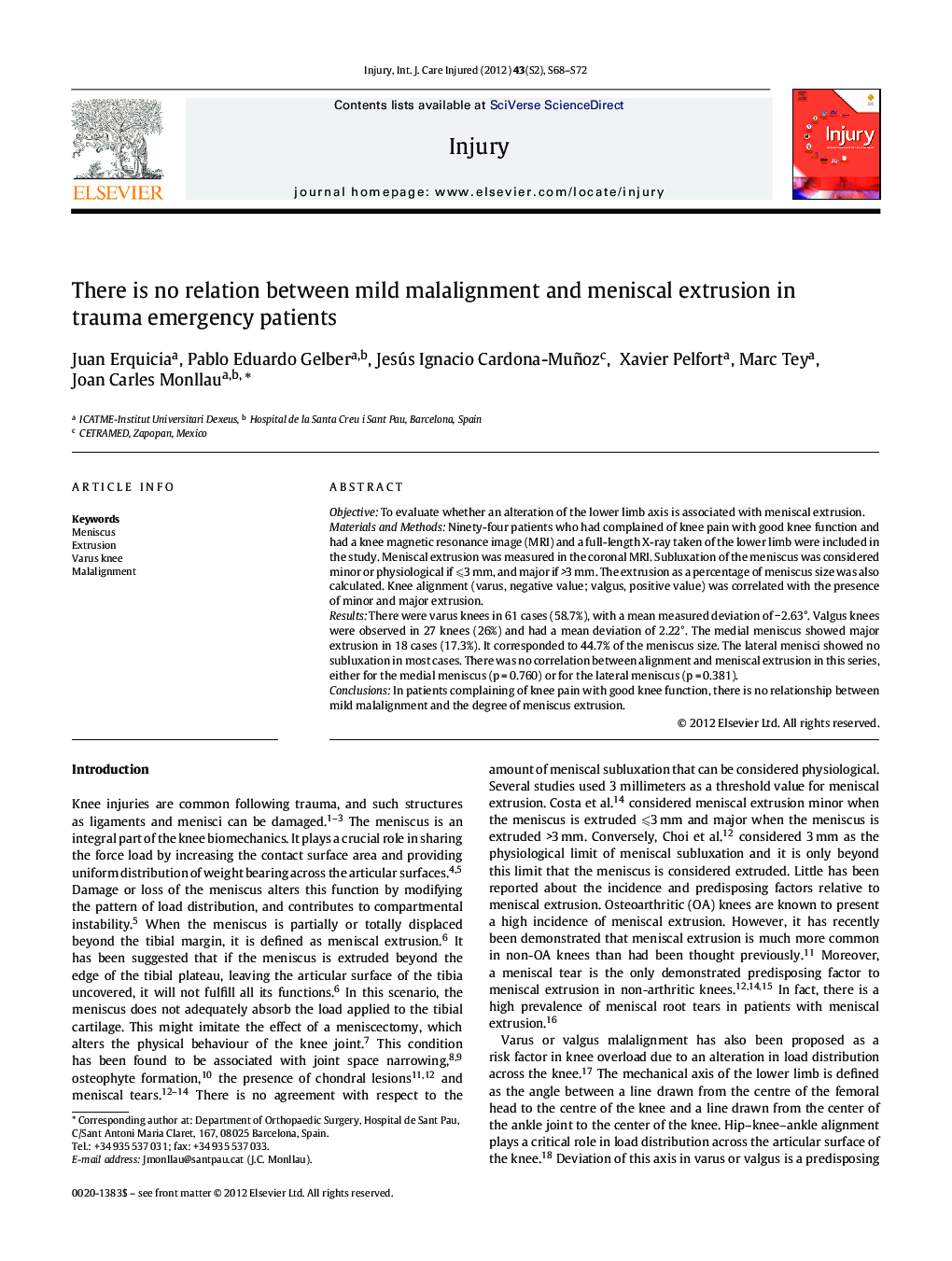| Article ID | Journal | Published Year | Pages | File Type |
|---|---|---|---|---|
| 3241350 | Injury | 2012 | 5 Pages |
ObjectiveTo evaluate whether an alteration of the lower limb axis is associated with meniscal extrusion. Materials and Methods: Ninety-four patients who had complained of knee pain with good knee function and had a knee magnetic resonance image (MRI) and a full-length X-ray taken of the lower limb were included in the study. Meniscal extrusion was measured in the coronal MRI. Subluxation of the meniscus was considered minor or physiological if ≤3 mm, and major if >3 mm. The extrusion as a percentage of meniscus size was also calculated. Knee alignment (varus, negative value; valgus, positive value) was correlated with the presence of minor and major extrusion.ResultsThere were varus knees in 61 cases (58.7%), with a mean measured deviation of −2.63°. Valgus knees were observed in 27 knees (26%) and had a mean deviation of 2.22°. The medial meniscus showed major extrusion in 18 cases (17.3%). It corresponded to 44.7% of the meniscus size. The lateral menisci showed no subluxation in most cases. There was no correlation between alignment and meniscal extrusion in this series, either for the medial meniscus (p = 0.760) or for the lateral meniscus (p = 0.381).ConclusionsIn patients complaining of knee pain with good knee function, there is no relationship between mild malalignment and the degree of meniscus extrusion.
